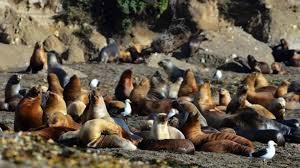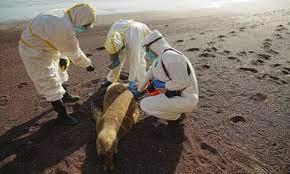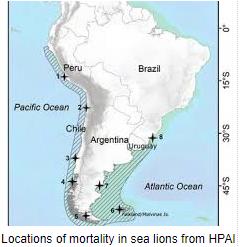 A comprehensive report* confirms mass mortality of over 5,000 Peruvian sea lions (Otaria flavescens) between January and April 2023. Mortality was concentrated on San Gallan Island, a protected breeding area. Losses represented five percent of the sea lion population
A comprehensive report* confirms mass mortality of over 5,000 Peruvian sea lions (Otaria flavescens) between January and April 2023. Mortality was concentrated on San Gallan Island, a protected breeding area. Losses represented five percent of the sea lion population
The high rate of mortality within a limited period coinciding with mortality in marine birds suggests transmission from avian populations to seals and then animal-to-animal transmission. Novel H5N1 sub-strains were isolated from dead seals that demonstrated pulmonary congestion and encephalitis.

Adaptation of avian influenza H5N1 to mammals with direct transmission is a concern, given that H5N1 is regarded by the World Health Organization as a potential pandemic influenza strain. Animal-to-animal transmission occurred when H5N1 was introduced into a population of mink farmed for pelts in Spain during October 2022 and at the present time in fur-farms in Finland.
 Epidemiologists on four continents are currently conducting surveillance on avian influenza in mammals including genomic sequencing of strains isolated from free-living and farmed species.
Epidemiologists on four continents are currently conducting surveillance on avian influenza in mammals including genomic sequencing of strains isolated from free-living and farmed species.
*Gamarra-Toledo, V. et al. Mass Mortality of Sea Lions Caused by Highly Pathogenic Avian Influenza A (H5N1) Virus, Emerging Infectious Diseases doi:10.3201/eid 2912.230192 (2023)